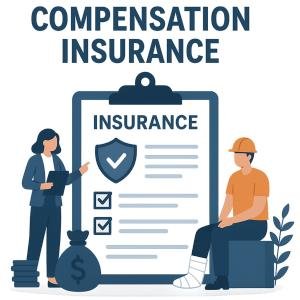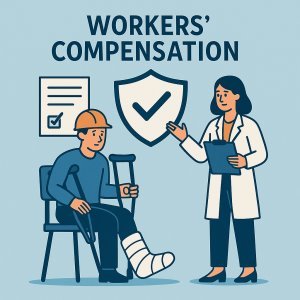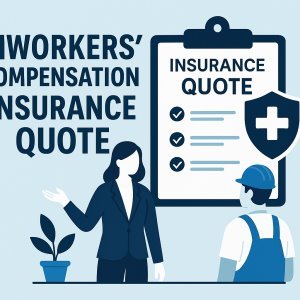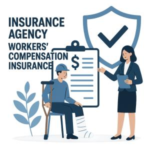
Audit Prep—Warehouse Staffing Workers’ Comp
July 23, 2025
Using AI to Reduce Georgia Security Guard Workers’ Comp Claims
July 23, 2025In the world of security, vehicle patrol guards serve as vigilant sentinels on wheels, navigating vast areas and responding swiftly to incidents. While their mobility provides a critical advantage, it also brings unique challenges-especially when it comes to managing workers’ compensation exposures linked to auto-related risks. From slips behind the wheel to the nuances of vehicular incidents, addressing these concerns is essential for safeguarding both the guards and their employers. This article explores the landscape of vehicle patrol security, shedding light on how to effectively manage and mitigate the auto-related workers’ comp exposures inherent in this dynamic profession.
Table of Contents
- Vehicle Patrol Security Guards and the Unique Risk Landscape of Auto-Related work
- Identifying Common Workers’ Compensation Hazards in Vehicle-Based Security Roles
- Implementing Proactive Safety Protocols to Minimize Auto-Related Injuries
- Training and Equipment Recommendations for Enhancing On-the-Road Safety
- Q&A
- Insights and Conclusions
Vehicle Patrol Security Guards and the Unique Risk Landscape of auto-Related Work
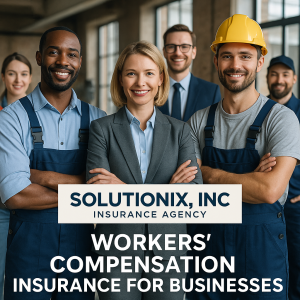
Vehicle patrol security guards face a distinctive set of hazards that differentiate their roles from traditional static guard duties. Constantly on the move, these professionals navigate various environments – from bustling parking lots to isolated industrial sites – exposing them to vehicular traffic, unpredictable terrain, and environmental conditions that can fluctuate rapidly. Their exposure to risks such as vehicle collisions, slips and falls while entering or exiting vehicles, and the ergonomic challenges associated with prolonged driving means they require specialized training and risk management strategies.
Key risk factors include:
- Traffic-related incidents: Collisions with other vehicles or pedestrians in congested areas.
- Environmental exposures: Extreme weather leading to poor visibility or hazardous road conditions.
- Fatigue and ergonomics: Long hours behind the wheel increasing the risk of musculoskeletal injuries.
- Equipment maintenance hazards: Proper vehicle upkeep involving mechanical or chemical risks.
| Risk Type | Potential Impact | Mitigation Strategies |
|---|---|---|
| Vehicular Collision | Injury, Liability | Defensive driving training, speed monitoring |
| Slip/Fall Exposures | Fractures, Sprains | Non-slip footwear, situational awareness drills |
| Ergonomic Strain | Chronic pain, Fatigue | Regular breaks, ergonomic seat adjustments |
| Mechanical Mishaps | Injuries from tools or chemicals | Personal Protective Equipment (PPE), routine inspections |
Identifying Common Workers’ Compensation Hazards in Vehicle-Based Security Roles
Personnel tasked with vehicle patrol duties face a unique constellation of risks that extend beyond typical foot patrol hazards.Among these, vehicle collisions rank as the most meaningful threat, whether due to distracted driving, poor weather conditions, or navigating unfamiliar terrains during a shift. Additionally, fatigue-related incidents are a constant concern, as prolonged hours behind the wheel can impair judgment and reaction times, elevating the likelihood of accidents. Patrol drivers may also confront the dangers of roadside hazards, including slippery surfaces, uneven roadways, or encounters with aggressive drivers, all of which require constant vigilance and defensive driving techniques.
Security teams must recognise that beyond the driving itself, the operation and maintenance of the vehicle pose supplementary risks. These include ergonomic strain from repetitive movements or improper seating positions, potentially leading to musculoskeletal injuries. Exposure to vehicle exhaust fumes during stops or maintenance can also introduce respiratory concerns.The table below summarizes key hazard categories and typical examples encountered:
| Hazard Category | Example Risks |
|---|---|
| Driving Hazards | Collisions, Fatigue, Weather Conditions |
| Environmental Hazards | Roadside Obstacles, Poor Visibility |
| Ergonomic & Health | Repetitive Strain, Exhaust Exposure |
Implementing Proactive Safety Protocols to Minimize Auto-Related Injuries
To significantly reduce the risk of auto-related injuries among vehicle patrol security guards, it is crucial to establish a culture of proactive safety.This starts with comprehensive training programs that emphasize defensive driving techniques, proper vehicle maintenance, and situational awareness.Guards should be familiar with the unique hazards of their surroundings, such as varying weather conditions, high-traffic zones, and potential antagonistic encounters. Equipping employees with state-of-the-art safety gear-including high-visibility vests, dash cams, and GPS tracking-further enhances situational control and aids in incident documentation.
Beyond training and equipment, implementing clear, enforceable protocols sets the groundwork for consistent safe practices. Regular safety audits and performance reviews help identify gaps in protocols and encourage continuous improvement.Below is a sample checklist used by supervisors to monitor daily safety compliance, ensuring that all measurable standards are consistently met:
| Safety Checkpoint | Status | Notes |
|---|---|---|
| Pre-shift Vehicle Inspection | Completed | Brakes, lights, tires checked |
| Defensive Driving Refresher | Scheduled Monthly | Next session: 05/15 |
| incident Reporting Procedure | Reviewed | Accessible via mobile app |
| Use of Safety Equipment | Consistent | High-visibility vest worn |
- Regular Training Updates: Keeping guards informed on latest safety trends
- Incident Drills: Practicing responses to emergency scenarios
- open Communication Channels: Promoting feedback and safety concerns
Training and Equipment Recommendations for Enhancing On-the-Road Safety
To significantly reduce the risk of vehicle-related incidents, it’s essential that security personnel receive comprehensive training tailored specifically to the demands of on-the-road duties. Emphasizing defensive driving techniques, hazard recognition, and situational awareness cultivates a proactive mindset that can preempt accidents before they occur. Incorporating scenario-based drills and real-world simulations enhances decision-making skills under pressure, ensuring guards are prepared for the unpredictability of patrol routes. Additionally, regular refresher courses keep safety protocols sharp and up to date with evolving traffic laws and technologies.
Equipping patrol guards with the right tools complements their training by providing both protection and efficiency. Essential gear such as high-visibility uniforms, reliable communication devices, and ergonomic seating arrangements can make a significant difference in reducing fatigue and improving response times. Below is a concise overview of recommended equipment designed to optimize on-the-road safety for vehicle patrol security teams:
| Equipment | Benefit | Proposal |
|---|---|---|
| High-Visibility Vests | Enhances visibility during day and night patrols | ANSI/ISEA 107 compliant |
| Hands-Free Communication Headsets | Keeps both hands free for vehicle control | Noise-canceling with clear audio |
| Ergonomic Seat Cushions | Reduces driver fatigue on long shifts | Memory foam with lumbar support |
| Dash Cameras | Provides evidence and promotes safe driving | Wide-angle lens with night vision |
| First Aid Kits | Immediate response to minor injuries | Compact kits with essential supplies |
Q&A
Q&A: Vehicle Patrol Security Guards – managing Auto-Related Workers’ Comp Exposures
Q1: Who are vehicle patrol security guards, and what makes their job unique?
A: Vehicle patrol security guards are professionals who monitor large properties, neighborhoods, or commercial sites by driving marked vehicles along predetermined routes. Their role combines elements of traditional security with the challenges of operating a vehicle for extended periods in various weather and traffic conditions. this mobile nature of their work introduces unique risks related to driving, such as vehicle accidents and ergonomic stresses.
Q2: What are the primary workers’ compensation risks associated with vehicle patrol security guards?
A: The main risks stem from auto-related incidents, including collisions, slips and falls while entering or exiting vehicles, and repetitive strain injuries from prolonged driving. Additionally,guards may face injuries related to hazardous driving conditions,emergency responses,or confrontations while in or near their vehicles.
Q3: How can employers proactively manage these auto-related workers’ comp exposures?
A: Effective management begins with comprehensive driver training tailored to the specific patrol environment,emphasizing defensive driving and hazard recognition. Maintaining a rigorous vehicle maintenance schedule and ensuring all equipment is safe reduces mechanical failure risks. Encouraging regular breaks helps minimize fatigue, while ergonomic training can prevent strain injuries. Employers should also implement clear incident reporting and response protocols.
Q4: What role dose technology play in enhancing safety for vehicle patrol security guards?
A: Technology can be a valuable ally, ranging from GPS and telematics systems that monitor driving behavior to dash cameras that provide accountability and evidence in case of incidents. Driver alert systems can warn guards about drowsiness or unsafe maneuvers, and mobile communication tools ensure swift assistance during emergencies.
Q5: are there any legal or insurance considerations unique to vehicle patrol workers?
A: Yes. Since vehicle patrol guards operate vehicles as part of their job,their workers’ comp claims often intersect with auto insurance and liability policies. Employers must ensure adequate coverage that addresses both personal injury and property damage.Understanding the interplay between workers’ compensation and auto liability insurance is crucial to avoid coverage gaps.
Q6: how can a culture of safety be cultivated among vehicle patrol security teams?
A: Leadership commitment to safety, ongoing training, and open communication channels are key. Recognizing and rewarding safe driving practices encourages guards to prioritize caution. Regular safety meetings, sharing lessons learned from near-misses, and soliciting input on potential hazards foster a proactive and engaged workforce.
Q7: what’s the best approach to managing workers’ comp exposures for vehicle patrol guards?
A: A holistic approach that integrates training, technology, vehicle maintenance, and supportive management practices is essential. By recognizing the unique challenges of auto-related work and addressing them systematically, employers can reduce injuries, lower compensation costs, and create a safer work environment for vehicle patrol security guards.
Insights and Conclusions
In the dynamic world of vehicle patrol security, managing auto-related workers’ compensation exposures is both a challenge and a necessity. As guards navigate the roads, balancing vigilance and safety becomes paramount-not only to protect the public but to safeguard their own well-being. By embracing proactive training, clear protocols, and ongoing risk assessment, organizations can turn potential hazards into manageable realities. Ultimately, the road to effective risk management is paved with preparation, awareness, and commitment, ensuring that those who keep watch behind the wheel remain protected every mile of the way.
“This content was generated with the assistance of artificial intelligence. While we strive for accuracy, AI-generated content may not always reflect the most current information or professional advice. Users are encouraged to independently verify critical information and, where appropriate, consult with qualified professionals, lawyers, state statutes and regulations & NCCI rules & manuals before making decisions based on this content.”

